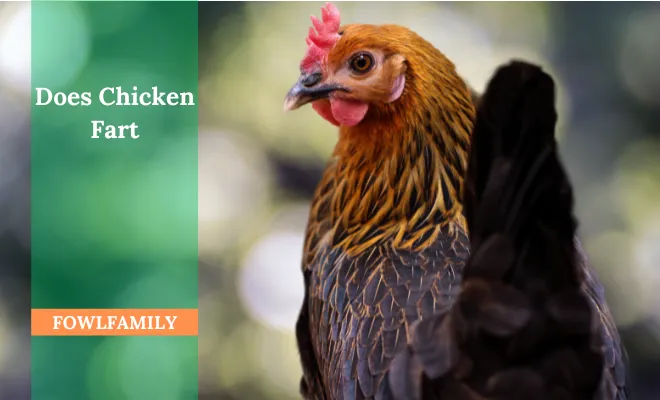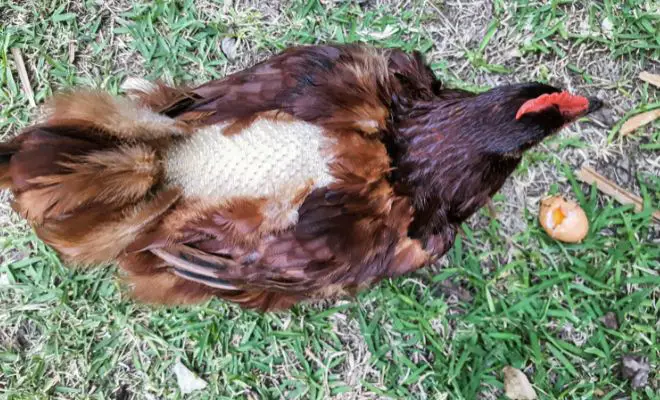How Do You Know If The Chick Alive In Eggs? 2 Easy Checks!

Sometimes things don’t go according to plan when you decide to hatch the chicks. Determining the viability of an egg, especially in the context of incubation, is crucial!
But, how do you tell if an egg has a dead chick? First, recognizing the signs of an egg containing a dead chick can prevent the waste of resources. Then, either you can try the candling process or do the float test. Examining the unhatched eggs is also an important fact.
Are you curious to learn if you can do something for the eggs? Let’s find out what to do with unfertilized eggs and the considerations!
Table of Contents
How Do You Know If The Chick Alive In Eggs? Know the Embryo Mortality

Raising chicks from eggs can be a fulfilling experience, but sometimes you might encounter unhatched eggs. Fear not, there are ways to determine if an egg contains a chick that didn’t develop.
Before that, you need to know about Embryo mortality. So, what is embryo mortality?
Embryo mortality, or chick death within the egg, can happen at various stages. Knowing the timing can offer clues about potential causes. Here is the understanding –
- Live embryo: A network of red veins pulsating (blood flow) with possible slight movement.
- Dead embryo: You may see a dark, motionless shape with a distinct blood ring. Also, a large, darkened eye with an underdeveloped chick or a shadowy mass instead of a vein. It can also happen!
Sadly, chicks can die at various stages during incubation. What Causes chicks to die inside the egg?
Here’s a breakdown of the common culprits.
- Early Death (First 3 Days): Problems with forming organs – likely due to poor egg quality or handling issues.
- Late Death (Last 3 Days): Chick might struggle to pip, breathe air, or absorb the yolk sac. Humidity control might be a factor.
- Incubation problems: Fully developed chick didn’t hatch can also happen due to Incorrect temperature, humidity, or hygiene.
- Nutritional deficiencies: An issue with the breeding hens’ diet.
- Infection: Oftentimes infection can be a reason to kill the chick inside.
- Shaking or vibrations: It’s especially harmful early on.
- Hypercalcaemia (too much calcium): It makes eggshells too hard to hatch from.
Here are some tips to optimize chick-hatching success.
- Maintain proper incubation temperature and humidity.
- Turn the eggs regularly according to a schedule.
- Use high-quality, fertile eggs.
- Monitor the incubation process closely.
- Limit candling to recommended days to avoid disturbing development.
Related Reads:
Now, what methods can ensure chicks are dead inside? Let’s check it out!
Candling Method: Flashlight On (A Day By Day Approach)

This technique allows you to see inside the egg without breaking it. You’ll need a strong light source, like a bright LED flashlight, and a darkened room. Here’s how it works.
- Shine the light: Hold the flashlight behind the egg, cupping it in your hands to block stray light. Then interpret the view based on candling days.
- Days 5-7: At this early stage, a small, dark spot with radiating veins signifies a live embryo. A clear or motionless interior might indicate a non-fertile egg.
- Days 10-14: The network of veins will become more prominent, and you might even see the movement of the developing chick. A dark, unmoving ring or a shadowy mass could suggest a dead embryo.
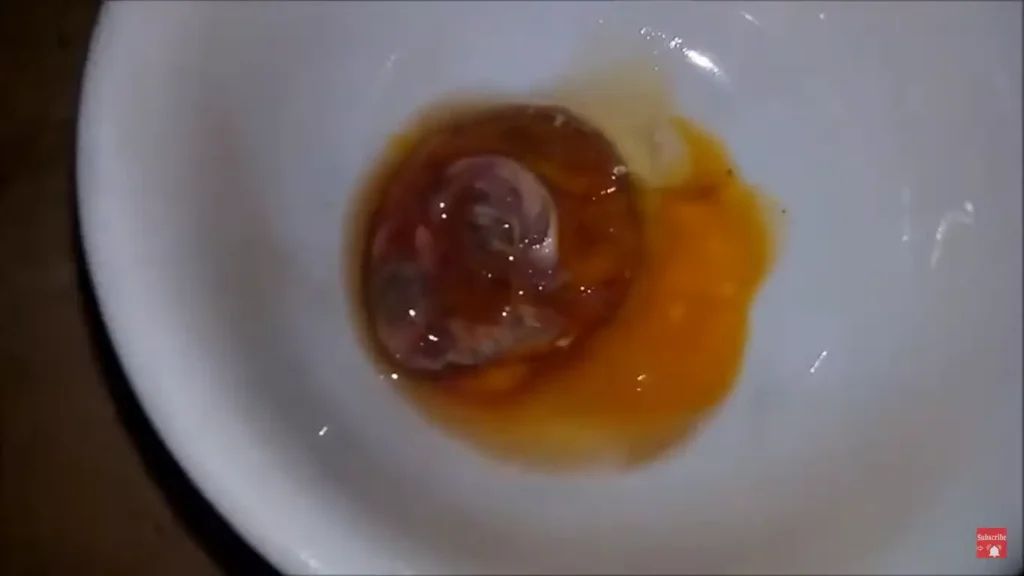
- Days 18 to dead egg candling day 21 or beyond: The chick will take up most of the egg space, with a visible air sac at the larger end. The movement might be difficult to see. A completely dark or misshapen interior could indicate late-stage death.
The following video can help you out!
The Float Test – A Simple Check (After Hatching)
This method is best used after most chicks have hatched to avoid harming live ones.
- Prepare the water: Fill a bowl with lukewarm water.
- Gently place the egg: Submerge the unhatched egg carefully in the water.

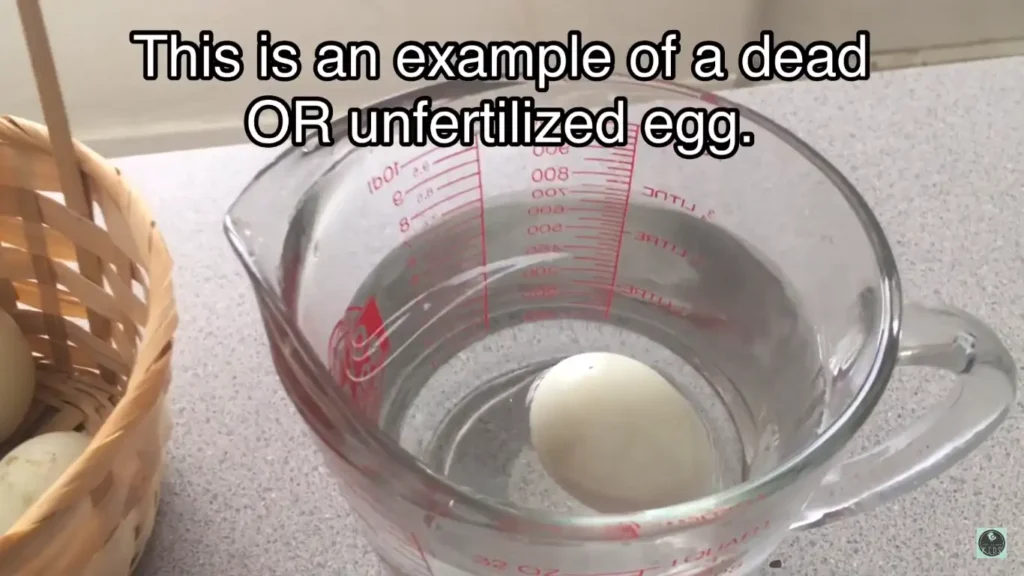
- Sinking: A sinking egg likely signifies a dead chick. Live embryos lack a developed air sac, causing them to sink.
- Floating: A floating egg might indicate a dead chick with an air sac that formed during development.
These following methods will be helpful when it’s about, “how to tell if an egg has a chick in it, or if an unhatched egg is alive.”
So, What does a dead egg look like?
During the incubation process, you can spot a dead egg by looking for these signs.
- Candling shows minimal or no growth inside the egg.
- No reaction to light during candling, indicating no live embryo.
- The bad smell suggests the decomposition of a dead chick inside.
- The egg appears darker or discolored, signifying death.
- Irregular or enlarged air cells hint at embryo mortality.
If you discover such situations, carefully discard the eggs. Watch this video to try this floating method appropriately!
What Does It Mean When An Egg Has Chick in Water?
The presence of water inside an egg with a chick wouldn’t be a normal scenario. Here’s why:
- Eggs have a natural protective coating: The eggshell has a special waxy coating called the bloom that helps prevent moisture loss and bacterial contamination. This coating also prevents water from entering the egg.
- Developing chicks breathe through air sacs: During incubation, a chick develops air sacs within the egg. These air sacs allow the chick to breathe after it has developed lungs. The water inside the egg would hinder this breathing process.
- Cracked egg: Possibly, if an egg is cracked during incubation, some moisture might enter. However, this is a serious situation and the chick’s survival is unlikely.
- Condensation: During incubation, some condensation might form on the inside of the incubator walls. If the egg touches a cold spot, condensation droplets could briefly appear on the eggshell, but wouldn’t penetrate the shell.
- Yolk sac: The chick absorbs the yolk sac during development. This yolk sac is a source of nutrients and might appear watery, but it’s a natural part of the development process.
What to Do?
If you suspect water is inside an egg with a chick, consult a poultry specialist or vet. They can assess the situation and advise on the best course of action.
Important Note: Do not attempt to open the egg yourself. This could harm the chick or introduce bacteria. Also, maintain proper incubation humidity. Too much humidity can weaken the eggshell and contribute to problems.
What to Do with Unfertilized Eggs from the Incubator?
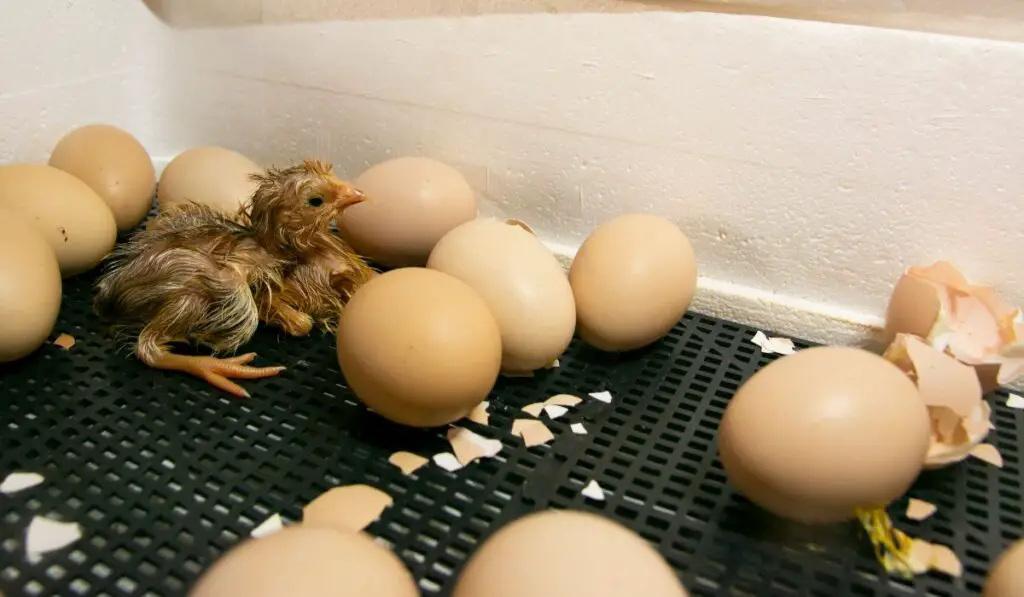
Unfertilized eggs from the incubator serve various purposes. It’s even though they won’t develop into chicks. The given facts will clarify it!
Composting
Composting is an eco-friendly way to dispose of the egg and return nutrients to the soil. But, not all composting methods accept eggshells.
As a suggestion, you can crush the eggshells and add them to your compost pile.
Discarding
It’s a simple and quick method. Sadly, not an environmentally friendly option.
But, you can wrap the unfertilized egg in a plastic bag or newspaper. Then, throw it away with your regular trash.
Using for Crafts
A fun and creative way to reuse the eggshells! But you need to clean and dry the eggshells.
Carefully crack the egg open, and separate the yolk and whites. You can use these for cooking. But be sure you clean the eggshells thoroughly. Dry them completely before using them for crafts like painting or decoupage.
Feeding to Pets (with Caution)
It can be a source of calcium for some pets! However, raw eggs can carry a risk of salmonella.
Only consider this option if your vet approves. Hard-boil the egg, then crush the shells and offer them in small quantities.
Important Notes: Don’t attempt to refreeze unfertilized eggs. Remove unfertilized eggs from the incubator as soon as possible.
FAQs
Check this query section to get more facts about dead chicks inside eggs.
Q. What happens if eggs don’t hatch in 21 days?
If your eggs haven’t hatched after 21-25 days, they are unlikely to hatch at all. You can try candling to check for signs of development.
Q. Will a chicken sit on dead eggs?
Yes, a chicken might continue sitting on dead eggs for a while. Eventually, they will abandon the nest if the eggs remain unhatched for a prolonged period.
Q. What’s the longest an egg can take to hatch?
21 days are common for chickens. However, some larger birds like turkeys can take up to 30 days.
Q. Why are my eggs chirping but not hatching?
If you hear chirping but hatching isn’t happening, it could be a sign that the chick is struggling to pip. This might be due to incorrect humidity levels or chick positioning problems. Make the temperature and chick position ideal.
Q. Can eggs explode in the incubator?
This is uncommon but can happen due to bacterial growth inside the egg. It is caused by improper handling or storage before incubation.
Q. Will dirty eggs hatch?
Minor dirt on the eggshell shouldn’t impact hatching. However, heavily soiled eggs can harbor bacteria.
Q. Why was my egg green when I cracked it?
A green color inside a cracked egg usually indicates bacterial contamination. This can happen if the egg was infected before laying or improperly stored.
Conclusion
Hatching chicks is full of excitement and care. But, not all eggs end up with little chicks inside. It’s important to know if there’s a dead chick in an egg. We can use methods like candling and the float test to check if the eggs are healthy. Even though it’s sad when some eggs don’t hatch, we can learn from them for next time.
As a suggestion, make sure we give all the eggs in the right environment to hatch. Although some of them cannot survive, we can help at least!



